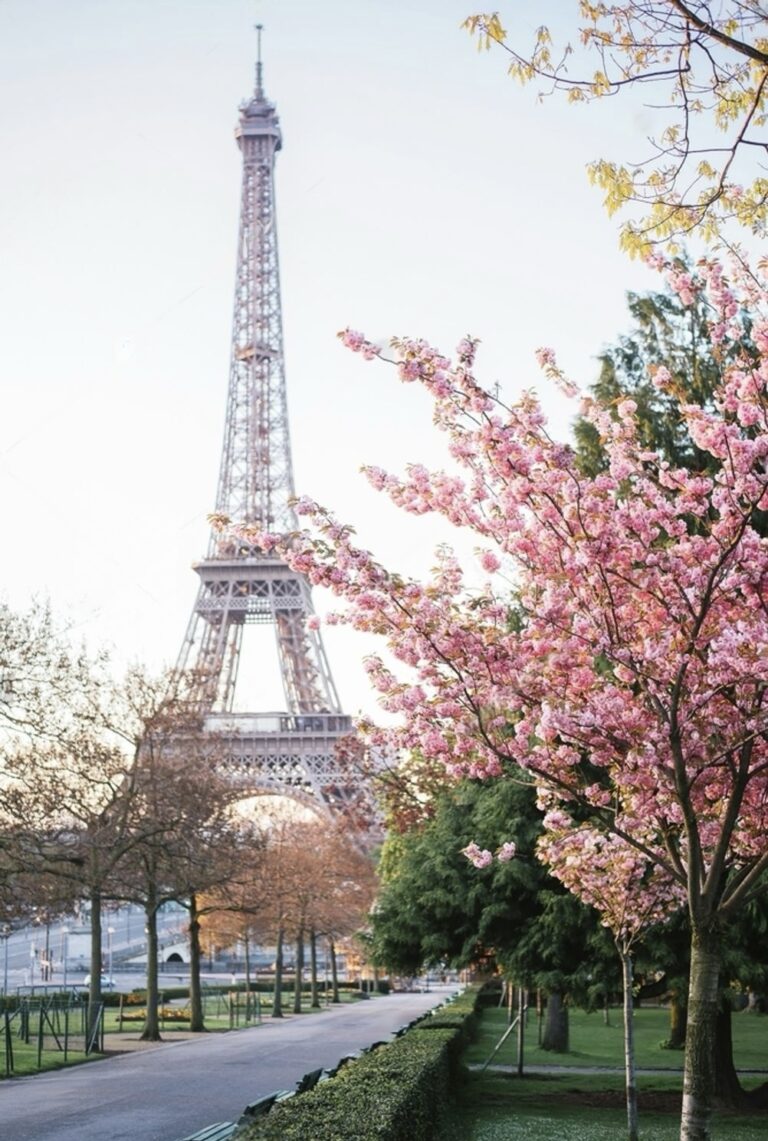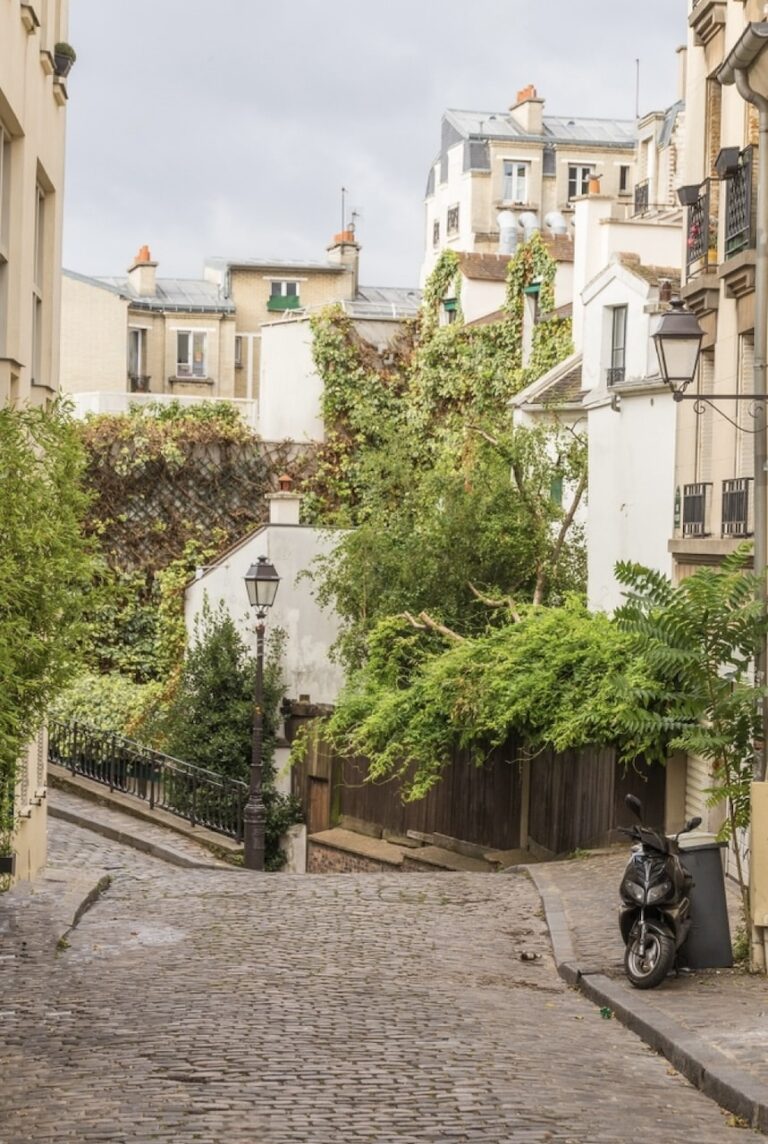Père Lachaise Cemetery | Ultimate Guide to 15 Famous Graves
Last Updated on April 4, 2025 by April Nicole
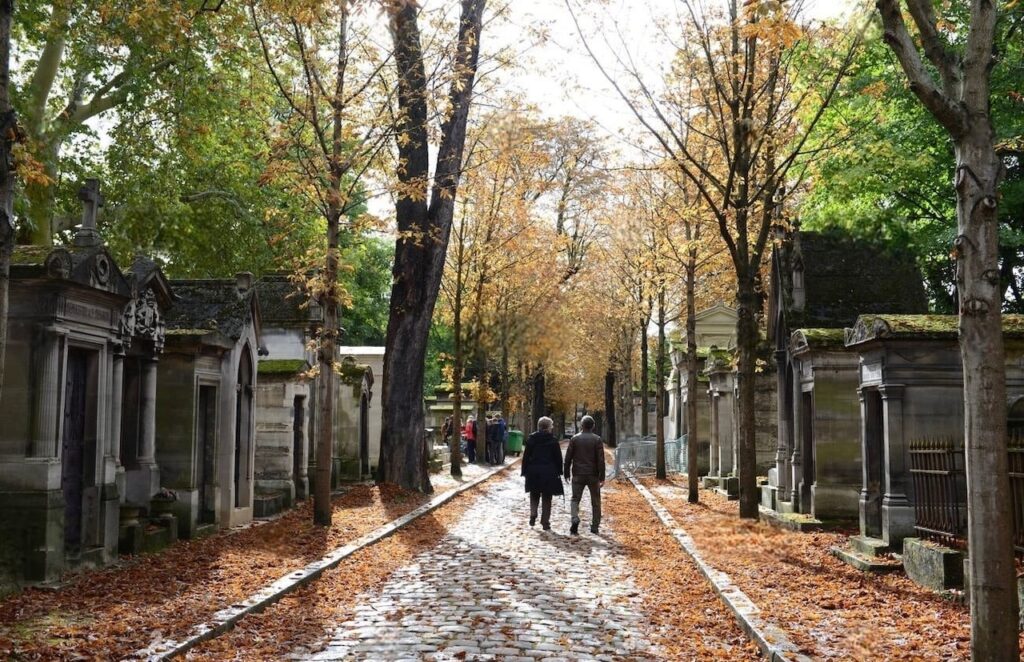
The first time I stepped into Père Lachaise Cemetery, I was struck by its eerie stillness, despite being one of the most visited sites in Paris. Walking through the cobbled pathways, shaded by towering trees, I felt as if I were stepping into a living museum of art, history, and memory. The air carried a quiet reverence, broken only by the occasional murmur of fellow visitors.
If you’re visiting Paris and have an interest in history, literature, music, or even just a love for exploring unique places, this guide to Père Lachaise’s must-see graves will help you plan an unforgettable visit.
📌 Psst! This blog post contains affiliate links, which means I may earn a small commission if you book through them—at no extra cost to you! Merci! For full details, check out my Disclosure Policy.
🪦✨ How to Visit Père Lachaise Cemetery in Paris ✨🇫🇷
Père Lachaise Cemetery is Paris’ most famous resting place, home to legendary figures and stunning funerary art. Here’s how to explore it:
- 📍 2 Hour Walking Tour of Père Lachaise Cemetery
Learn about the cemetery’s history, famous graves, and hidden stories with an expert guide.
- 🗺️ Visit to Père Lachaise Cemetery: a self-guided tour
Join us on a fascinating adventure through the heart of Père-Lachaise Cemetery with our GeoGaming tour.
- 🎼 The Père Lachaise Cemetery Private Tour
Discover celebrity graves often missed by visitors with a fully customizable private tour.
- 🖋️ Haunted Père Lachaise Cemetery Guided Tour
Experience the macabre as you explore the haunted Père Lachaise Cemetery with your guide.
- 🎭 Père Lachaise Cemetery Guided Tour in French
Explore the funerary art of the legendary Père Lachaise Cemetery of Paris with a 2.5-hour guided tour in French.
If you are in a hurry, here’s a summary of Père Lachaise Cemetery:
🪦✨ Quick Guide to Visiting Père Lachaise Cemetery
📍 Location: 16 Rue du Repos, 75020 Paris
💰 Entry Fee: Free
⏳ Best Time to Visit: Early morning or weekday for a peaceful experience
🚇 Nearest Metro: Père Lachaise (Lines 2 & 3) or Gambetta (Line 3)
📍 Map: Download one online or pick one up at the entrance
🚶 On Foot: The cemetery is huge (110 acres!), so wearing comfortable shoes is a must.
⚠️ Etiquette: No loud conversations, no touching graves, and minimal photography in sensitive areas
15 Most Famous Graves to Visit in Père Lachaise Cemetery
Writers & Poets
Oscar Wilde (1854–1900)
📍 Location: Division 89 | A massive Art Deco tomb, famously covered in tributes from admirers.

When I finally reached Oscar Wilde’s tomb, it was clear why it’s one of the most famous in the cemetery. The massive Art Deco sculpture, depicting a winged figure, stands out against the backdrop of simpler headstones. What surprised me most was the glass barrier surrounding it, installed to prevent fans from leaving lipstick kisses and love notes. Even so, I still saw a few fresh notes placed carefully at the base, tributes to the legendary wit who once said, “We are all in the gutter, but some of us are looking at the stars.”
Marcel Proust (1871–1922)
📍 Location: Division 85 | A modest grave often adorned with notes and books from devoted readers.

Marcel Proust was a literary giant, best known for his masterpiece, In Search of Lost Time (À la recherche du temps perdu). His seven-volume novel is one of the most influential works in literature, delving into memory, time, love, and human nature.
Visiting Proust’s grave feels like stepping into the pages of his writing. The cemetery itself mirrors the themes of memory and nostalgia that defined his work. Fans often leave handwritten passages from his books, as if returning his words to him.
Gertrude Stein (1874–1946) & Alice B. Toklas
📍 Location: Division 94 | A touching tribute to two literary pioneers buried together.

Gertrude Stein was a modernist writer, poet, and art patron, known for her avant-garde works and for hosting legendary salons in Paris. Her home became a gathering place for some of the greatest artists and writers of the 20th century, including Picasso, Hemingway, and F. Scott Fitzgerald.
Gertrude Stein and her partner, Alice B. Toklas, were inseparable for nearly 40 years. They defied societal norms, living openly as a couple in a time when few could. After Stein’s passing, Toklas was later buried beside her, solidifying their eternal bond.
Musicians & Singers
Jim Morrison (1943–1971)
📍 Location: Division 6 | The most-visited grave in Père Lachaise, covered in fan tributes.

Finding Jim Morrison’s grave is easy—just follow the small crowd of fans who gather around it. His modest tombstone, partially obscured by surrounding graves, doesn’t diminish its status as a pilgrimage site.
When I visited, someone had left a half-empty bottle of whiskey, and another had scrawled a quote from The Doors. A man with a guitar quietly strummed Riders on the Storm, turning the moment into an intimate tribute to the late rock legend.
Édith Piaf (1915–1963)
📍 Location: Division 97 | A simple yet beautiful grave frequently adorned with fresh flowers.

Édith Piaf is one of France’s most beloved singers, known for her soulful, heart-wrenching voice. From the streets of Paris to international stardom, she became an icon with songs like “La Vie en Rose” and “Non, Je Ne Regrette Rien.”
I had imagined Édith Piaf’s grave would be as grand as her voice, but it’s actually simple and unassuming. Despite its modesty, her resting place is always adorned with fresh flowers, left by admirers of La Vie en Rose.
Frédéric Chopin (1810–1849)
📍 Location: Division 11 | Marked by a statue of Euterpe, the Muse of Music, and decorated with tributes from music lovers.

Frédéric Chopin was a musical genius, widely regarded as one of the greatest pianists and composers of all time. His deeply expressive compositions, from Nocturnes to Polonaises, have enchanted listeners for centuries.
Approaching Chopin’s grave, I was struck by its elegance. The statue of Euterpe, the Muse of Music, weeping over a broken lyre, perfectly captures the sorrow of his early death. Someone had left a handwritten note in Polish, a tribute to the composer who never forgot his homeland.
Artists & Actors
Sarah Bernhardt (1844–1923)
📍 Location: Division 44 | The legendary actress’s resting place exudes the drama she brought to the stage.
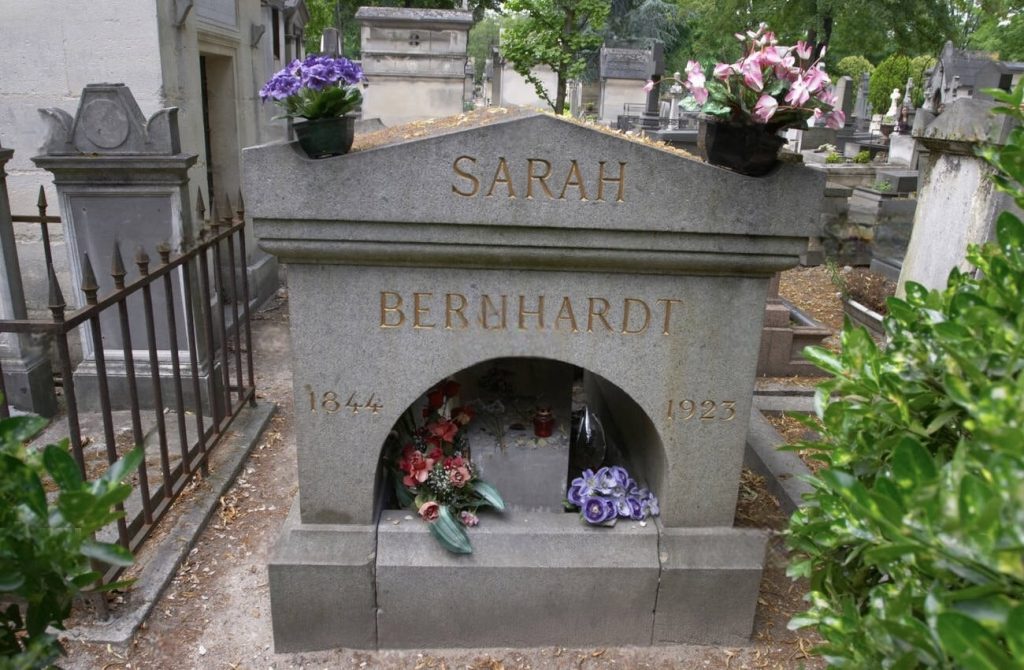
Sarah Bernhardt was one of the most famous actresses of all time, often called “The Divine Sarah.” She dominated the French stage in the late 19th and early 20th centuries, captivating audiences with her dramatic performances and larger-than-life personality.
Her graves exudes the same drama she brought to the stage. Although not as flashy as some other tombs, standing before it, I could almost hear echoes of her performances.
Amedeo Modigliani (1884–1920)
📍 Location: Division 96 | A heart-wrenching site, where the painter and his muse are buried together.

Amedeo Modigliani was a brilliant yet tormented artist, known for his elongated portraits and hauntingly expressive figures. His art, heavily influenced by African masks and modernism, was unlike anything else of his time.
Modigliani his muse, Jeanne Hébuterne, are buried together after she took her life following his death. Their love story lingers in the air, making it one of the more poignant sites in the cemetery.
Historical & Political Figures
Georges Haussmann (1809–1891) – The Man Who Built Modern Paris
📍 Location: Division 4 | The architect behind Paris’s grand boulevards and modern urban design.

Before visiting Père Lachaise, I hadn’t given much thought to Georges Haussmann, but standing before his tomb, I realized how much of his influence I had already experienced throughout Paris. Haussmann was the mastermind behind the wide boulevards, grand avenues, and iconic urban layout that define the city today.
His grave, while not as ornate as some, holds historical weight—without him, there would be no Champs-Élysées as we know it, no sweeping views from Montmartre, and no grand Parisian facades. If you love Paris’ urban beauty, it’s worth pausing here and reflecting on how one man reshaped the entire cityscape.
Jean de La Fontaine (1621–1695) – The Master of Fables
📍 Location: Division 25 | His tomb features a carved stone relief, a fitting tribute to the legendary fable writer.

As a lover of literature, I had to pay respects to Jean de La Fontaine, the man behind some of the most famous French fables, including The Tortoise and the Hare and The Fox and the Grapes.
His grave, adorned with a carved stone relief, captures the whimsical nature of his work. While standing there, I noticed a child and their parent reading one of his fables aloud—a small, beautiful moment that reminded me how timeless his stories remain. If you’ve ever read or heard a moral lesson wrapped in an animal tale, chances are you’ve encountered his legacy.
Abelard & Heloise – The Tragic Lovers
📍 Location: Division 7 | One of the most poetic graves in the cemetery, covered in love notes from visitors.
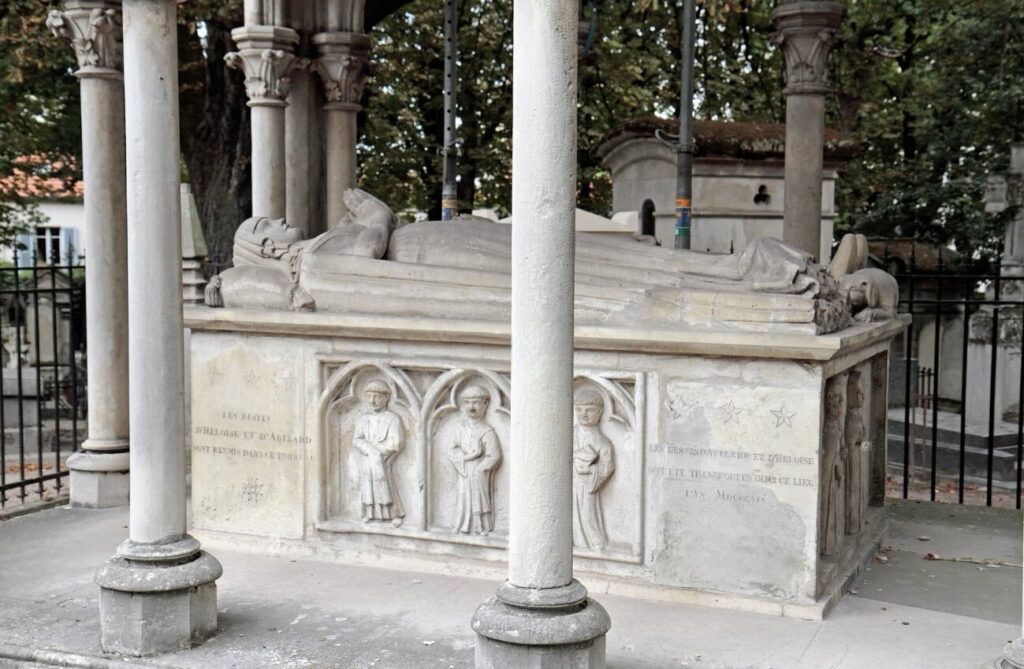
Few graves at Père Lachaise carry as much romantic tragedy as that of Abelard and Heloise. Their tomb is one of the most stunning in the cemetery—a Gothic-style canopy with intricate details, fitting for a story that feels almost Shakespearean.
As I stood there, I thought about how their love affair shook medieval society—a brilliant philosopher (Abelard) and a gifted scholar (Heloise) who fell in love, only to be torn apart by scandal, punishment, and tragedy. Even in death, they were separated for centuries before finally being buried together in Père Lachaise.
Hidden & Lesser-Known Graves Worth Seeing
While the famous names at Père Lachaise attract the biggest crowds, some of the most intriguing stories belong to the lesser-known graves. These are the ones that surprised me the most—graves with unexpected traditions, eerie energy, and quiet but powerful legacies.
Allan Kardec (1804–1869) – The Father of Spiritism
📍 Location: Division 44 | Surrounded by flowers, candles, and notes, believed to bring spiritual enlightenment.

Kardec was the founder of Spiritism, a philosophy that blends science, philosophy, and spirituality, particularly influencing Brazilian and French spiritualist movements.
I wasn’t particularly familiar with Allan Kardec before visiting Père Lachaise, but his grave immediately caught my attention. Unlike many others, his tombstone is adorned with flowers, candles, and small notes, left by those who believe in his teachings.
It’s said that touching the base of his tomb brings spiritual enlightenment. I hesitated for a moment but eventually placed my hand on the stone—just to see if I’d feel anything. Did I walk away enlightened? Maybe not, but I did leave with a new appreciation for how deeply people still connect with his ideas, even in death.
Gerda Taro (1910–1937) – The Forgotten War Photographer
📍 Location: Division 97 | A modest grave marking the resting place of a pioneering female war photographer.

Walking through the rows of ornate mausoleums and grand statues, I nearly missed Gerda Taro’s grave—it’s small and modest, unlike the dramatic tombs that surround it. But the story behind it is anything but ordinary.
Taro was one of the first female war photographers and a fearless documenter of the Spanish Civil War. She died tragically young, at just 26, after being fatally wounded while covering the front lines. Standing before her grave, I imagined the courage it must have taken to walk into battle armed only with a camera.
There were no large tributes, no crowds, just a simple stone with her name. I found this strangely fitting—Taro never sought fame in life, only to tell the truth through her lens. If you visit, take a quiet moment here. She deserves to be remembered.
Victor Noir (1848–1870) – The Tomb That Grants Luck in Love
📍 Location: Division 92 | Features a life-sized bronze effigy, touched by visitors hoping for luck in love.

I had read about Victor Noir’s grave before visiting, but nothing could have prepared me for the odd sight that awaited me. Unlike most statues in the cemetery, which are worn by time and weather, one specific part of Noir’s bronze effigy gleams brightly: his trousers.
The story? Victor Noir was a journalist, shot in a political dispute at just 22 years old. But it’s not his life that makes his grave famous—it’s what happened afterward. His bronze sculpture features him lying as if in death, a tragic yet strangely lifelike depiction. Over time, rumors spread that touching a certain part of the statue (yes, you guessed it—his groin) would bring fertility and luck in love.
Sure enough, when I arrived, I saw visitors—some shy, some giggling—reaching out to rub the statue. A small bouquet of flowers rested near his lips, left by someone still keeping the tradition alive. Did I join in? I’ll leave that a mystery. But whether or not you believe in the legend, it’s one of the quirkiest and most unexpected spots in Père Lachaise.
Suggested Walking Route for Père Lachaise Cemetery
To make your visit more efficient and immersive, follow this walking route covering all the must-see graves.
📍 Starting Point: Gambetta Metro Station (Line 3)
Enter through the Gambetta entrance (Division 70) to walk downhill, avoiding unnecessary climbing. Grab a free cemetery map at the entrance or use the Google Maps route.
1️⃣ Abelard and Heloise – Division 7
⬇ Short walk downhill
2️⃣ Oscar Wilde – Division 89
⬇ Stay on the downhill path
3️⃣ Marcel Proust – Division 85
⬇ Continue downhill
4️⃣ Gertrude Stein & Alice B. Toklas – Division 94
⬇ Follow the main path downward
5️⃣ Victor Noir – Division 92
⬇ Turn slightly left, walking further downhill
6️⃣ Édith Piaf – Division 97
⬇ Head toward the center of the cemetery
7️⃣ Jim Morrison – Division 6
⬇ Follow the main path
8️⃣ Chopin – Division 11
⬇ Turn slightly left to avoid backtracking
9️⃣ Georges Haussmann – Division 4
⬇ Continue forward
🔟 Jean de La Fontaine – Division 25
⬇ Short downhill walk
1️⃣1️⃣ Sarah Bernhardt – Division 44
⬇ Slight left turn to continue downhill
1️⃣2️⃣ Allan Kardec – Division 44
⬇ Minimal walking distance
1️⃣3️⃣ Amedeo Modigliani & Jeanne Hébuterne – Division 96
⬇ Follow the last major downhill path
1️⃣4️⃣ Gerda Taro – Division 97
⬇ Final stretch toward the exit
📍 Ending Point: Père Lachaise Metro Station (Lines 2 & 3)
🗺 Tips for Following This Route:
✅ Time Needed: 1.5 to 2 hours, depending on how long you linger.
✅ Best Time: Morning or late afternoon for fewer crowds.
✅ Navigation: Use an interactive Google Maps version of this route or a printed Père Lachaise map.
✅ Extra Exploration: Wander the lesser-known sections—you never know what hidden gems you’ll find!
📍 Père Lachaise Walking Tour Map
👉 How to Use This Map:
- Click on any grave marker for historical facts, personal anecdotes, and visitor tips.
- Use your phone for navigation—Google Maps will guide you in real-time!
Final Thoughts on Famous Graves at Père Lachaise Cemetery
Visiting Père Lachaise Cemetery was more than just a historical tour—it was a journey through time, art, and emotion. The gravestones tell stories that go beyond death; they speak of love, rebellion, and legacy. Each visit uncovers something new, whether it’s a name you hadn’t noticed before or a personal tribute left by a stranger.
If you’ve been to Père Lachaise, what was your most memorable moment? Let me know in the comments—I’d love to hear your experiences!






